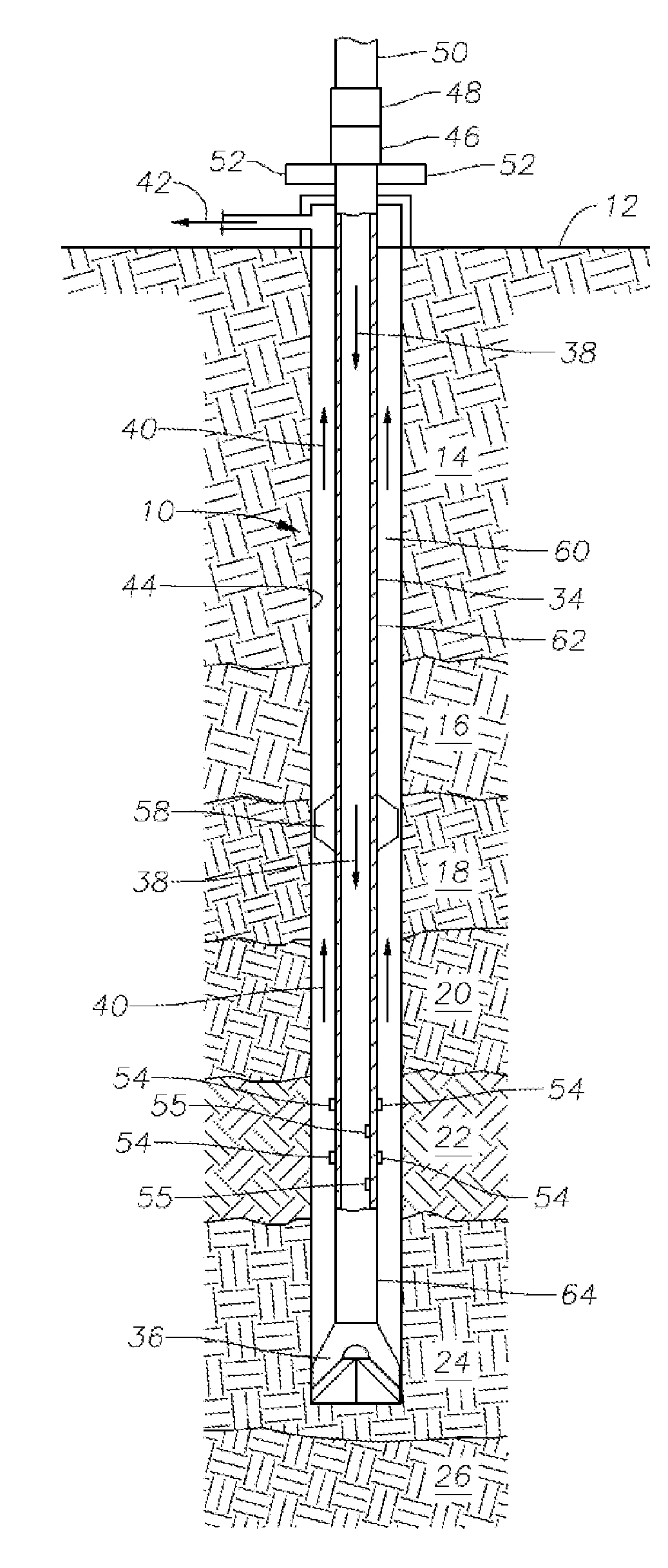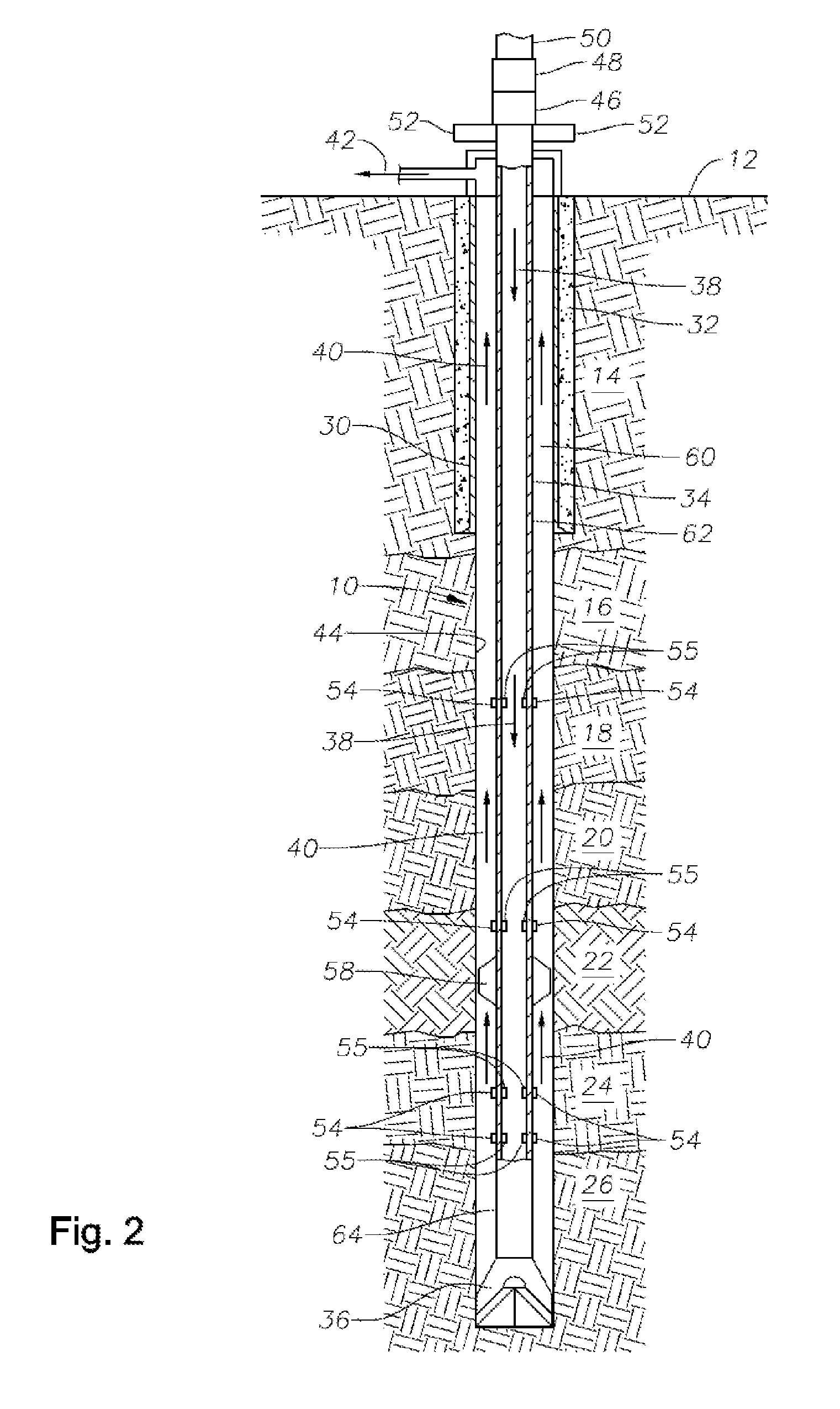Method for detecting formation pore pressure by detecting pumps-off gas downhole
a technology of pore pressure detection and pumping gas, which is applied in the direction of borehole/well accessories, survey, construction, etc., can solve the problems of insufficient weight of drilling fluid to maintain over-balance on the well, the wellbore portion of the formation can be detrimental, and the wellbore portion may be drilled slightly over-balanced
- Summary
- Abstract
- Description
- Claims
- Application Information
AI Technical Summary
Benefits of technology
Problems solved by technology
Method used
Image
Examples
Embodiment Construction
[0049]In the following description, numerous details are set forth to provide an understanding of the disclosed methods and apparatus. However, it will be understood by those skilled in the art that the methods and apparatus may be practiced without these details and that numerous variations or modifications from the described embodiments may be possible.
[0050]In the discussion of the drawing figures, the same numbers will be used throughout to refer to the same or similar components.
[0051]As illustrated in FIG. 1, a wellbore 10 extends from an earth surface 12 through an overburden 14 and through formations 16, 18, 20, 22, 24 and 26. Some of these formations may be oil-bearing or gas-bearing formations while others may be shale formations which contain pressured fluids. A drill pipe (also referred to herein as a drill string) 34 is positioned to extend from the earth surface to a drill bit 36. Drilling fluid is pumped through the drill string as illustrated by arrows 38 and recover...
PUM
 Login to View More
Login to View More Abstract
Description
Claims
Application Information
 Login to View More
Login to View More - R&D
- Intellectual Property
- Life Sciences
- Materials
- Tech Scout
- Unparalleled Data Quality
- Higher Quality Content
- 60% Fewer Hallucinations
Browse by: Latest US Patents, China's latest patents, Technical Efficacy Thesaurus, Application Domain, Technology Topic, Popular Technical Reports.
© 2025 PatSnap. All rights reserved.Legal|Privacy policy|Modern Slavery Act Transparency Statement|Sitemap|About US| Contact US: help@patsnap.com



